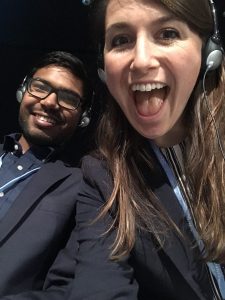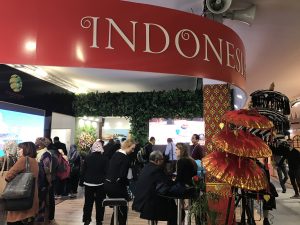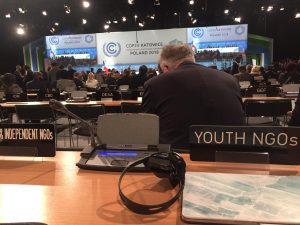Cai May Tan
Today was my last day of COP24. While finalizing my day’s schedule, I had to consult my mental checklist without getting too distracted by everything that is going on. So as planned, I sat in on a few informal consultations on agenda items that I have been following for the past few days, namely SBI agenda items regarding Adaptation Committee and the public registry, and APA item 4. My first session was turned into an informal informal consultation (dubbed ‘inf inf’), so I was not able to sit in as an observer. Under the pressure to produce clean iterations by today, I could observe high pressure coming from both the body Secretariat and Parties. The time crunch did not work so much in favor of finalizing the agenda items I was tracking, because Parties became less collaborative and more staunch on their positions. This scenario prevailed in the final session (APA item 4) that I attended. Parties were unhappy over the new iterations produced by the Secretariat. I had the opportunity to catch the Malaysian negotiator tracking the session, and was able to confirm that the iteration was very different from what Parties have worked on in the past two years. Thus, I noted that Parties were taking opportunities to interpret the language in the new text, and also insert their own preferred language. In particular, Saudi Arabia held strongly onto the inclusion of co-benefits in the texts. The session ran double than the allocated time, but observers and Secretariat alike anticipated the reactions coming from Parties. As COP24 heads into the second week, I know I’ll be following negotiations outcomes closely to see how things transpire.
Amanda Ullman
Somehow my last day of attending COP24 has already come and gone. My final day was spent tieing up loose ends and completing my COP bucket list. One thing I realized I hadn’t done in my time here was attend a negotiation! There have been so many incredible energy talks spanning from fossil fuel subsidies to maritime policy that I have wanted to attend, and I realized late last night that I hadn’t made any room in my schedule for negotiations, the reason for which this entire conference takes place. I knew my client was interested in response measures so I thought a SBSTA meeting on the topic would be the perfect wrap up event.
During the negotiations, I was surprised by how hesitant the parties were to talk. The chair of the meeting really had to twist the country representatives’ arms to get anyone to talk about how to move forward with editing of the chapeau (the intro paragraph) of a summary document with recommendations on how to move forward with response measures. The chair worked so hard to solicit feedback from the country representatives that he even had to throw in a couple quips about how he wished Norway was around to “break the ice.” Eventually so little progress has been made that the chair decided to have the group take a 5 minute break to reset the situation. During the break, I joked with the person sitting next to me about how the group was surely on the verge of a breakthrough. After some back and forth jest, I was shocked to find that my conversation partner was one of Spain’s delegates! I would have been more embarrassed about how candid I had been, but he had laughed at all my jokes, so I took our brief interaction as a win for Spanish-American relations.
P.S. Those that are wondering about the final form of the chapeau will be displeased to hear that the negotiation ended with nothing to show for the chair’s efforts. They had taken so long to make a decision that the negotiation ran into the time slot of another scheduled meeting and the group was kicked out of the room.
Paelina DeStephano
The last day of COP was full of meetings and wrapping up work for my client. I went to the second session of multilateral assessments and listened to Germany talk about their progress towards reducing greenhouse gas emissions. They are not on track to make their 2020 target, and that garnered a lot of attention today, including the honor of “fossil of the day”. In the assessment the very first questions, from Marshall Islands, asked Germany what it would take to reduce their dependence on coal. This question went unanswered. With all the talk of just transitions and the need to diversify economies, there is still a major reticence to wind down fossil fuel extraction. Resource extraction is seen as such a strong element of national sovereignty that it collides awkwardly with UN attempts for multilateral action. I think we’ll need to see even stronger market signals and domestic pressure in order to start turning stubborn states, like Germany, around.




